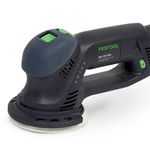Why You Need a Benchtop Sander
They tackle trimming and smoothing quicker than hand tools do-with now sharpening required
Synopsis: It may not be the star of your workshop, but a benchtop sander handles some jobs better than any other tool. Here, Roland Johnson looks at the types of benchtop sander best suited to furniture making: disk sanders, combination belt-disk sanders, and oscillating spindle sanders. Once you have one of these machines, you’ll find a host of odd jobs for it. And soon you will wonder how you got along without one.
from Fine Woodworking #221
A benchtop sander will never be the star of the shop, but there are a handful of jobs that it handles better than any other tool. I’ll reveal a few of these tasks here, but once you have a disk, belt, or spindle sander, you’ll discover many more odd jobs for it—and soon you’ll wonder how you got along without one or more of these units. What’s more, many of these versatile machines can be had for around $100 to $450.
There are a lot of benchtop sanding machines out there, but I’ll focus on the types best suited to furniture makers: disk sanders, combination belt-disk sanders, and oscillating spindle sanders. These tools will have even more appeal to those who favor power tools over hand tools, as the sanders can step in to do jobs normally reserved for rasps, files, spokeshaves, and handplanes.
But remember that these machines are not the last word on surface prep. They all are very aggressive, and any surface that will be visible will require some final hand-sanding to perfect it. Also, these sanders require a light touch, or you risk sanding over the line—quickly and deeply.
Last, these sanders spew lots of fine dust, even when connected to a dust collector or shop vacuum. That means you need to wear a high-quality dust mask when using these machines.
Now let’s take a look at the most basic of the bunch, disk sanders.
Disk sanders: Useful, but limited Most disk sanders come with a 12-in.-dia. disk, a table to support the workpiece, and a miter gauge. This sander is very adept at shaping or trimming end grain, like when you need to take a bit off the end of a tenon—a job normally reserved for a sharp handplane—or when you need to quickly chamfer the ends of a tenon or dowel.
Disk sanders also can be used to clean up and fair convex curves on templates to create a perfect path for a router to follow. The downward sanding motion is your friend here, making it easy to control the workpiece. You also can use this machine to smooth bandsawn convex curves on actual furniture parts, but because the disk cuts across the workpiece, you’ll have obvious scratch marks to remove with a hand-sanding block.
The disk sander has its limits.
For the full article, download the PDF below:
Fine Woodworking Recommended Products

Festool Rotex FEQ-Plus Random Orbital Sander

Ridgid EB4424 Oscillating Spindle/Belt Sander

Stanley Powerlock 16-ft. tape measure























Log in or create an account to post a comment.
Sign up Log in